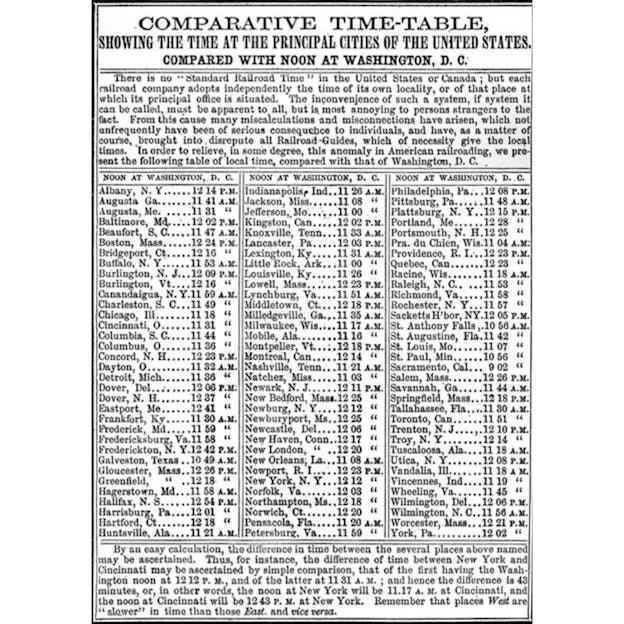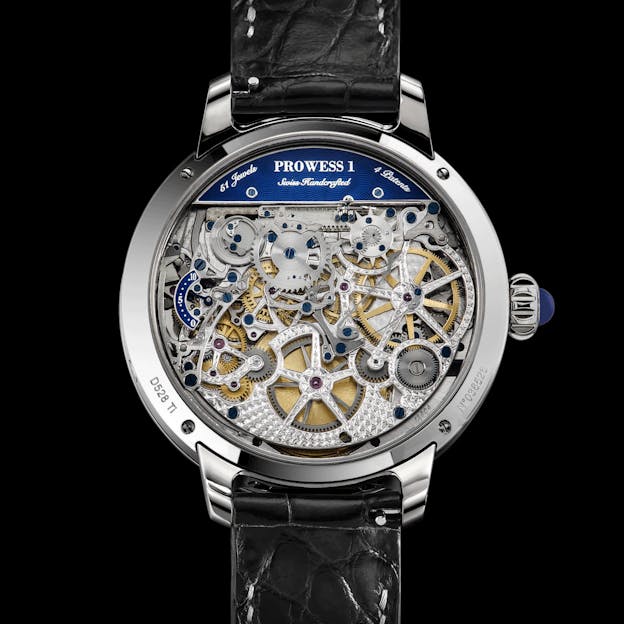The Bovet Récital 28 Prowess 1: The Worldtimer to Rule Them All
“I don’t mind going back to daylight saving time. With inflation, the hour will be the only thing I’ve saved all year.” — Victor Borge
In 2024 we often think of time as being one of those little intricacies of life that is always agreed upon. If it’s 12 o’clock it is 12 o’clock. However, this wasn’t always the case as the world has gone through many iterations of time. Just as in the way we have pivoted calendars throughout history, time — more specifically time on a global scale — has been a constant source of debate.
Today people don’t generally debate what day or what time it is. We have atomic clocks linked to GPS that allow us to keep accurate and agreed upon time anywhere in the world based on the movement of the sun, but prior to 1918, asking someone what time it was in NY and Maine you would receive different responses despite both being in the modern day EST.

However, with the Bovet Recital 28 Prowess 1 the problem of creating a worldtimer that can be adjusted for all the variations in timekeeping around the world, more specifically Daylight Savings Time has been solved. Despite not being the first world timer to incorporate DST, it is the first to do so with a perpetual calendar and tourbillon making this a timepiece worthy of much admiration.
With the Bovet Récital 28 Prowess 1 (which is a mouthful), time is no longer relative.
A Brief History of UTC and DST
If you travel back to the 1800s, timekeeping was in turmoil. Cities, towns, and villages each adhered to their own “local solar time,” devoid of any synchronization. Noon was determined by the sun’s zenith at one’s longitude, leading to discrepancies across regions. For instance, while it struck 12:00 pm in New York City, it was 12:12 pm in Boston, Massachusetts, 11:30 am in Cleveland, Ohio, and 11:14 am in Indianapolis, Indiana. In bustling hubs like New York, the variance in local time could exceed a minute between its eastern and western districts. And as a native New Yorker I would argue it still does. (Brooklyn runs on a completely different time than Manhattan).

By 1884 the system of 24 time zones was adopted throughout the world based on the Prime Meridian in Greenwich, UK but it was never officially endorsed by the US government until 1918. However, GMT would not last and by 1972 UTC was adopted world wide. Coordinated Universal Time (UTC) is derived from TAI, which consolidates data from numerous atomic clocks dispersed globally. Positioned at 0° longitude, the prime meridian, UTC typically deviates by no more than a second from mean solar time and remains unaffected by daylight saving adjustments.
Daylight saving time was first instituted during WW1, but ended after the war. It was then again revived in 1942 amid World War II. The ensuing decades witnessed a period of inconsistency, as states and localities freely toggled between DST and standard time (ST) according to their discretion. Harry S. Truman famously called DST a “monstrosity in timekeeping.”
To mitigate this temporal disarray, Congress ultimately enacted the Uniform Time Act in 1966. This legislation standardized daylight saving time and established uniform start and end dates nationwide, excluding Hawaii and Arizona, which elected to adhere to standard time year-round.

Countries such as India, the UAE and China do not use DST (70 countries around the world out of 195 use DST). These discrepancies then presented a unique problem for watchmakers as GMT’s and wortimers did not account for DST. We can argue until we are blue in the face about whether we should keep it and if DST is still relevant. The reality is that we currently have it and if there is anyone who embraces a challenge it is a watchmaker.
The Watch

How The World Time System Works
The first time I looked at the images of this watch I had to call a few people in the office to try and decipher exactly how it works. Comprising of 24 rollers, each with four positions, all manipulated via the crown—UTC, AST (American Summer Time), EAS (Europe and America Summer Time), and EWT (European Winter Time). A push of the crown rotates each cylinder by 90 degrees, enabling individual adjustment of every time zone.

The cities rotate around like the face of a slot machine, but the 24-hour-ring on the dial does not move. For example, when you push the crown and switch from UTC to AST the position of the city of Dubai in relation to the 24 ring doesn’t change (because they do not adhere to DST), However, New York will appear on a new roller as it has moved 1 hour due to DST.
The rollers don’t actually change position, what changes is the city displayed on the roller. It is an ingenious solution and one I cannot remember ever seeing before.
The Tourbillon

The movement driving the Récital 28 Prowess 1 introduces a brand-new design, incorporating Bovet’s patented double-sided flying tourbillon as its foundation. The tourbillon has undergone enhancement, with the escapement placed entirely on one side of the central pivot point, while the cage supports the balance wheel and Bovet’s in-house balance spring on the other, enhancing its transparency.
The redesigned cage is Bovet’s lightest yet, comprising 62 components, 39 of which are entirely new, weighing a mere 0.35 grams. Housed within Bovet’s signature Writing Desk case (46.30mm), the Récital 28 Prowess 1 provides ample space for the tourbillon, positioned at 12 o’clock, at the widest part of the case.
The Perpetual Calendar

Featuring rollers for the date, leap year indication, and month, the mechanism functions akin to a slot machine, rolling back on the last day and month, while the other two advance. A specialized dampening system ensures a gentle stop. The intricate inner workings of the perpetual calendar mechanism are unveiled for the first time through the caseback.
The Decoration and Finishing

Each of the 744 components is hand-finished, with the plate adorned with perlage and Cotes de Geneve. The beveling of the major structures of the movement is absolutely stunning, and employs a technique known as angle rentrant to make possible. This demanding process requires skilled craftsmanship, as no machine currently exists capable of achieving the required precision.

This is something I hope doesn’t go overlooked. Today we see an abundance of watches with exquisite finishing on the movement, but for the entirety to be done by hand is a rare treat in today’s modern horological landscape.
The entire development of the Recital 28 Prowess 1 took more than 5 years to complete. Bovet’s CEO Pascal Raffy said that his goal was to create “an exceptional universal timepiece that could be adjusted for the vagaries of world time.” He continued to say, “The concept then was to have a world time system like the one on the Orbis Mundi, but at Bovet we always need to push watchmaking forward. We all thought the work was done, but I challenged my amazing team of engineers and watchmakers and they rose to the occasion — the result is truly a mechanical masterpiece.”
Something to Think About

I love a good worldtimer. To me, as I have stated countless times, a GMT or worldtimer are the most useful complications any watch could employ. However, the problem with any worldtimer, one accounting for DST or not, is that its complication is not dependent upon nature, but legislature. A moonphase complication is dependent upon the natural order of cycles in our world. No law can change the cycle of the moon and when a waning gibbous crosses our night sky. But a law can change daylight savings and timezones overnight. All worldtimers are almost guaranteed to be out of date (literally) at some point.
I don’t say this to take away from the genius behind this watch. DST creates a major problem when developing a worldtimer and Bovet solved this with an ingenious and original watch movement and design. However, in horology, we are at the mercy of creating timepieces that can either be timeless or we create something hung to the mercy of a midnight gavel in a far off state house. In this case it is the latter.
Specs
The Recital 28 Prowess 1 showcases technical excellence within the Dimier “Writing Desk” case, boasting dimensions of 46.3mm in diameter and 17.85mm in thickness. Crafted from 18K Red Gold, Platinum, or Polished Grade 5 Titanium, the case features a Sapphire Crystal exhibition back. Its dial exhibits inner and outer rings crafted from aventurine, while the rollers sport a black PVD finish.
Powering the hand-wound manufacture movement is the caliber R28-70-00X, measuring 38mm and a thickness of 13.30mm high. With a total of 744 components and 51 jewels, it operates at a frequency of 18,000 vph (2.5hz) and boasts a remarkable 10-day power reserve (240 hours).
Functionality includes hours, minutes, and seconds displayed on the flying tourbillon, alongside world time exhibited on rollers featuring UTC, Summer, and Winter indications. Additionally, a Perpetual Calendar function with rollers for retrograde date, month, and leap year, as well as disks for the day, enhances its capabilities. With a water resistance of 30m, the timepiece is complemented by a black alligator strap with platinum stitches, secured with an 18K Red Gold or White Gold folding clasp. The watch incorporates five patented innovations: Double-face flying tourbillon, Three-Dimensional Teething on the gears driving the month roller, Retrograde Rack Control, and Function Isolator.
Limited to eight timepieces a year. Learn more here.


